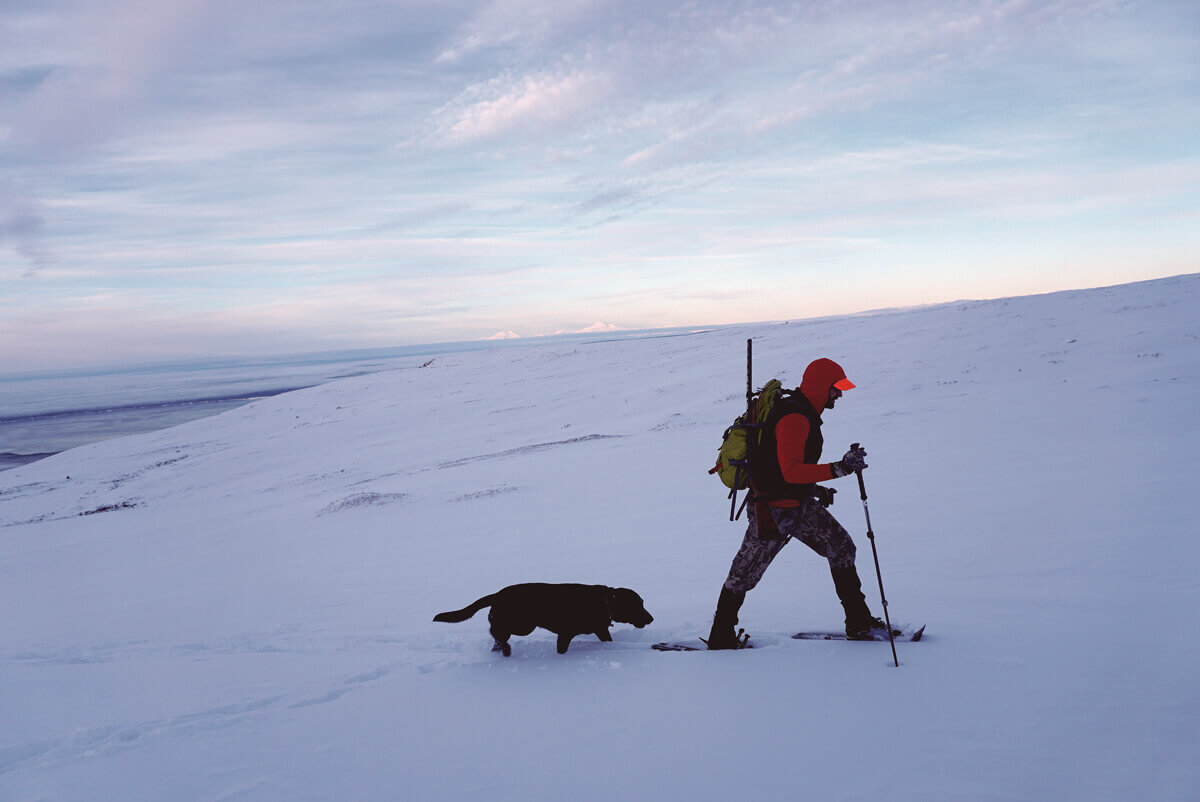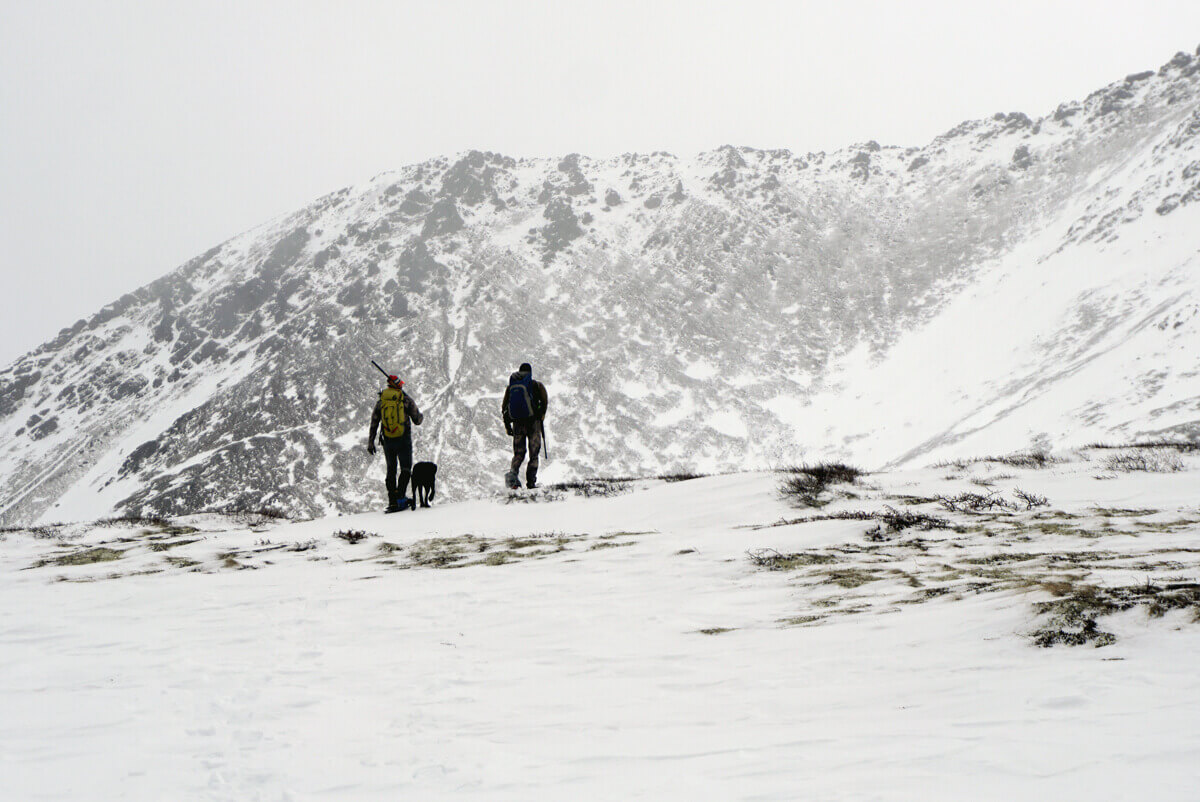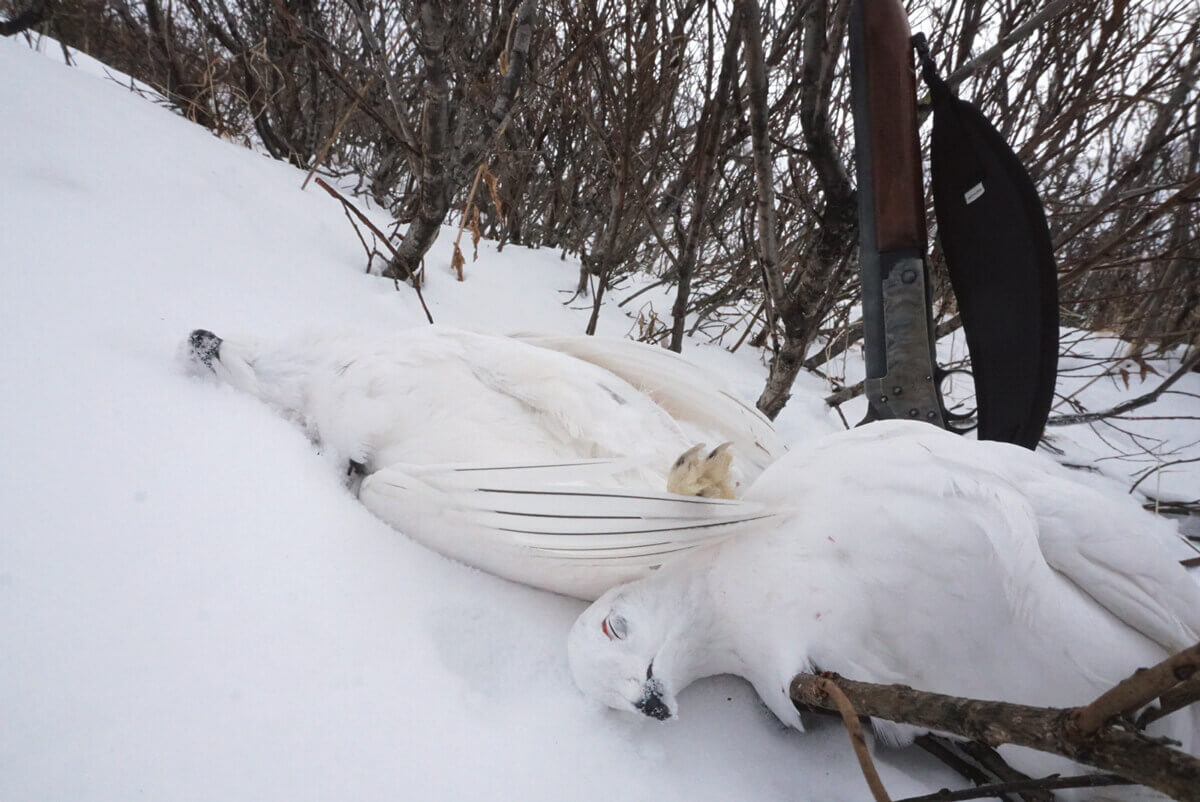Winter Ptarmigan
by Brian Ohlen
I’ve been blessed with natural balance and what my brother calls finesse. For what little time I put into practicing a particular activity, I usually come out better than average, much to the chagrin of others. To everything there is a learning curve, however–and developing new muscle memory and learning a new skill is what keeps things interesting. Following a moving target, subconsciously making calculations, and acting upon them: There is nothing like that rewarding connection of eye, brain, and muscle, whether it’s completing the perfect cast to a rising trout or tossing a frisbee to a friend.
I grew up in western South Dakota. During Christmas break when I was 12, we drove east to the fabled pheasant hunting grounds in the central part of the state for one of my first pheasant hunts. We kids normally didn’t hunt the prime season; instead, we were out during the late, cold months before the season closed, when the snow was deep, the wind strong, and the hunting tough. I preferred it that way.
Eager to find us youngsters some opportunities to shoot, Dad placed my brother and me at the end of a huge, old shelterbelt. Russian olive and juniper trees created a windbreak where pheasant could hunker down to get out of the elements. Dad, Grandpa Rodney, and Misty the black Lab drove to the end of the line of trees and walked toward us, flushing dozens of birds in our direction.
Even an experienced shooter struggles with crossing and head-on shots with fast-moving pheasant; at 17 and 12, my brother and I were helpless. Bird upon bird came at us at high speed. I emptied my shotgun, reloaded, and emptied it again. And again. Before long, my pockets were empty, and I had to sprint back to the car for another box. No matter how hard I tried, I couldn’t make the correct calculations. It seemed that my natural eye-hand coordination, which I had assumed was innate, automatic, had failed me. Perhaps my abilities were more learned than inherent? My biceps was bruised before the end of the hunt, and not a bird fell from the sky.
Now twenty-some-odd years in the future, I often wonder if I’m any better a shot. I still don’t shoot regularly, and only get out to hunt birds a handful of times each year. Pheasant-hunting opportunities in Alaska are nonexistent, but we have something else: ptarmigan. A member of the grouse family, the rugged ptarmigan, which prefers a harsh climate, is not unique to Alaska, but it wasn’t until I moved here that I ever considered hunting one. In fact, Alaska has three varieties of ptarmigan, and all look similar to forest grouse with a couple of distinguishing characteristics: They turn completely white in the winter, and their toes are feathered. Both the feathery toes and the stark white coloring are adaptations to their unforgiving surroundings. I have a great respect for creatures–ptarmigan, mountain goats, Dall sheep–that thrive in such a harsh terrain.
The hunting season is long, but it isn’t until the big game seasons have closed that I start to think about hunting ptarmigan. In late winter when the days are longer, we’re often graced with blue skies across south central Alaska–the perfect time to strap on skis or snowshoes and head into the mountains. When friends Cole and Jason asked me to tag along to one of their spots, I enthusiastically agreed.
After a 30-minute walk up the valley, we began to hear the tell-tale croaking that confirmed that birds were nearby. We crossed a gully, and Birke, Jason’s English setter, quickly sniffed out the first group of birds. In winter, ptarmigan often come together in large flocks; even after flushing the first few birds, many will remain on the snow, giving the hunter a second chance–a bonus when you’re working with a single-shot 20-gauge. With a few well-placed shots, Jason harvested the first birds of the day.
We moved up the drainage and flushed a few more birds. The flock got up behind me and flew up-valley, offering a quick, crossing-shot opportunity. I set the shotgun’s hammer with my thumb, swept the barrel across the sky, and pulled the trigger. To my surprise, my subconscious calculations were correct, and the bird fell. I broke the action open and reloaded a second shell as another single bird came up the valley, offering the same passing-shot opportunity. “No way can I make that shot a second time,” I thought to myself, even as I shouldered the gun. I led the target by a considerable distance, squeezed the trigger, and was stunned when the bird fell, landing in the exact same spot as the first. Perhaps I had learned something since that day in a South Dakota shelterbelt.
I walked the windblown plateau of that Alaskan mountain ridge, struck by how much it reminded me of the blustery, frozen plains of my boyhood home. Ignore the alpenglow view of Denali and the rugged mountain peaks just beyond our path, and the drifted-snow foreground could have been a piece of CRP in central South Dakota. As I trudged face first into the wind and snow, shotgun in hand, Cole’s free-range black Lab just punctuated the analogy. Though I was new to ptarmigan hunting, the familiarity brought back boyhood memories that made me smile.
Brian Ohlen is a writer, hunter, angler, and cyclist based in south-central Alaska.
Instagram: @spoke_n_fly
Website: spokenfly.com
Want More Ptarmigan?
-
HUNTING PTARMIGAN IN ALASKA – MUSINGS, HABITAT, AND POINTERS (DOGS AND TIPS)
- Gunning the White Birds of Winter – Hunting Ptarmigan in Alaska




